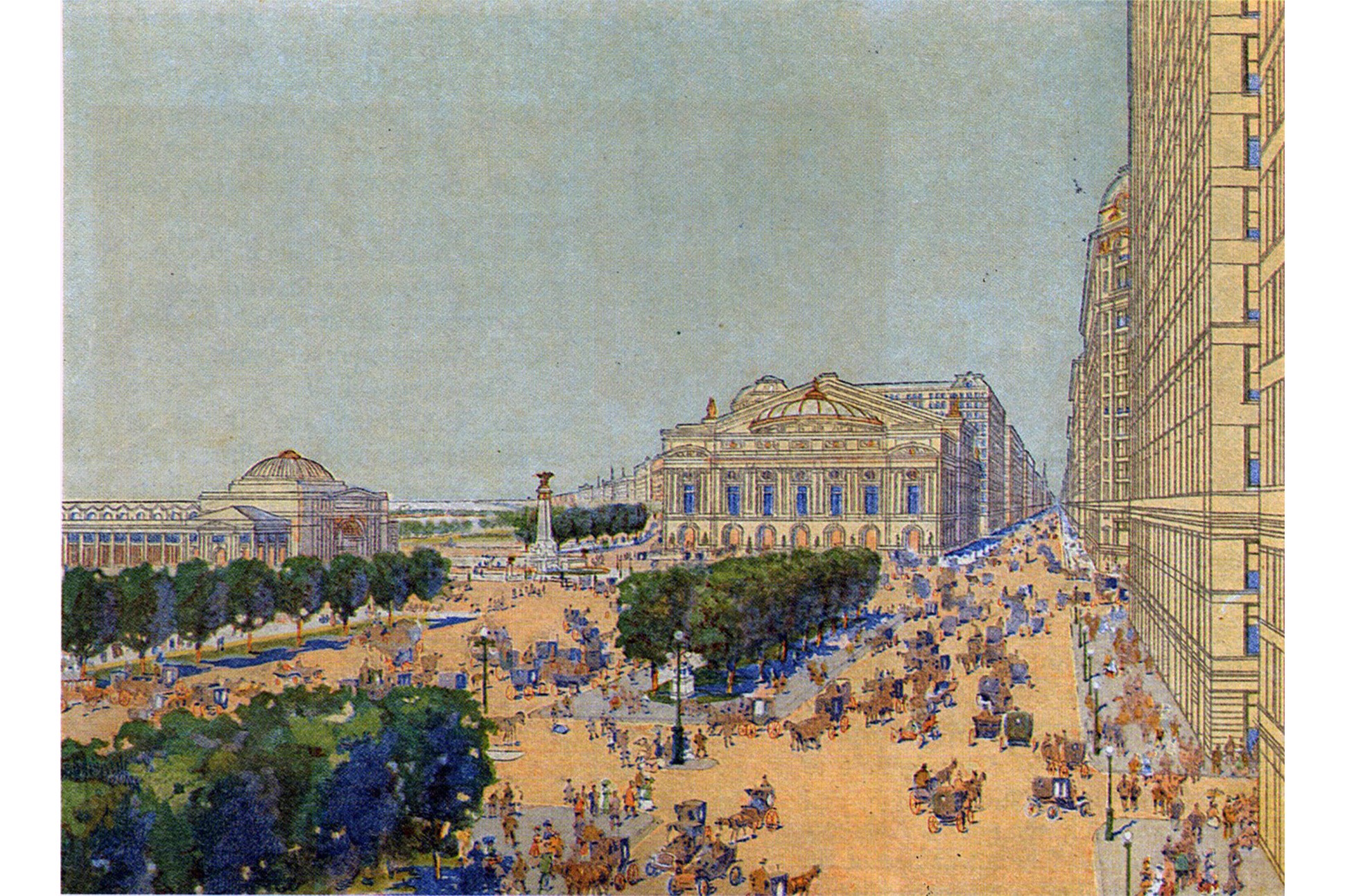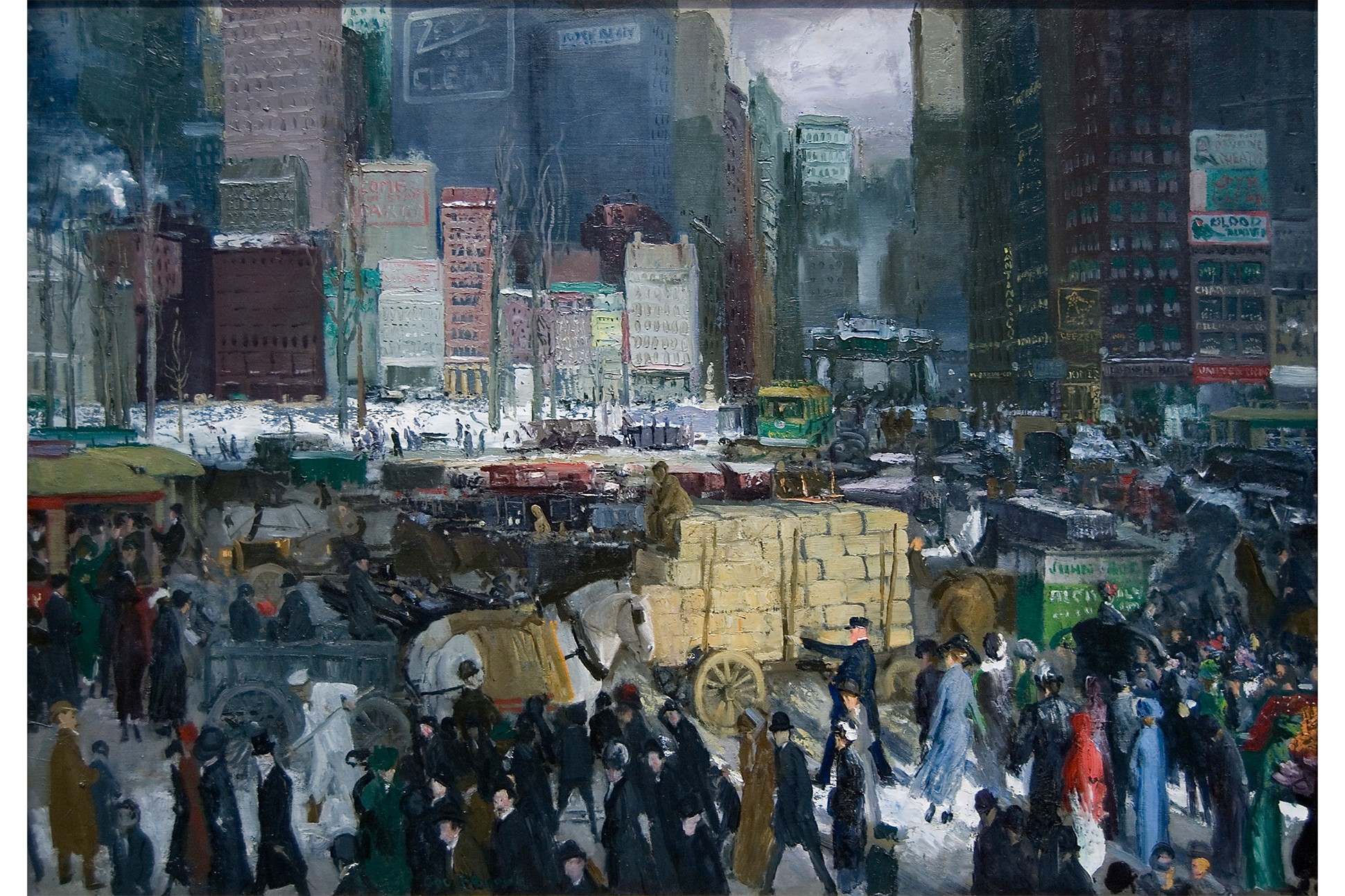Harriet Monroe, Art Critic

Prior to founding and editing Poetry magazine in 1912, Harriet Monroe was a perceptive art critic. In more than two hundred reviews, she produced insightful writing on contemporary American and international art. Monroe covered shows at private Chicago galleries and museum exhibitions alike, most thoroughly and notably those at the Art Institute. Even after Monroe began to publish Poetry in October of 1912, she continued to write art reviews for the Chicago Daily Tribune for nearly two more years.
In this period, she considered more intensely than ever the nature of creativity and the commonalities between poetry and the visual arts. In her reviews, Monroe did not limit her observations to art alone. She discussed civic matters, travel, the American West, Progressive-Era politics, and even the construction of the Panama Canal. Indeed, her scope was that of an enlightened citizen, a student of history, an avid world traveler, and a city booster.
Liesl Olson, a historian of Chicago culture, has called Monroe’s art reviews, not her poetry, her best writing. As a body of work, Monroe’s art criticism comprises a distinct and original voice, and as such it deserves to be placed beside that of renowned Chicago critics including C. J. Bulliet, Franz Schulze, and Alan Artner. Monroe’s sober, open-minded, and passionate observations on art both preview and complement the editorial and critical principles she deployed in Poetry magazine.
Harriet Monroe’s selected reviews in order of publication
In all these articles I was fighting the same battle which was then starting or about to start in Poetry—a never-ending battle for freedom of the creative spirit in the authentic and individual achievement of beauty through the fit expression of its ideas.
- Harriet Monroe, A Poet’s Life: Seventy Years in a Changing World
“New Versions of Truth”: Modernism at the 1913 Armory Show
The insurgents in art will take possession of New York tomorrow
One of Harriet Monroe’s most intriguing series of reviews—eight in total––addressed the 1913 International Exhibition of Modern Art, later known as the “Armory Show.” At the end of her life, she regarded these reviews as her most important. The exhibition, organized by progressive United States artists, was a head-spinning survey of modern art, most of it European. The United States has never recovered from the shock of the 20th-century’s avant-garde, which continues to inform the arts today.
Monroe’s City Beautiful: Architecture and Planning in Chicago
Architecture and poetry are the basic, the fundamental arts
Monroe espoused the principles of the Progressive-Era “City Beautiful” movement, which sought to improve citizens’ well-being through a commitment to aesthetics and thoughtful city planning. Even so, as the above quote makes clear, poetry was never far from her mind. Monroe’s observations about how her readers should experience their city sprang from the same source that determined how they should read the verse in her Poetry magazine.
“Wake up! Wake up!” Harriet Monroe on the Artist's Audience
Know a good thing when you see it; and, knowing it, recognize that it is your sacred duty, and ought to be your pleasure, to encourage the creator of that good thing
Monroe was clear about the importance of art and the reasons art, poetry, and those who produce them must persist. The trials of founding Poetry: A Magazine of Verse, including the financial struggle of establishing a magazine business, forced Monroe to reflect on the nature of creative success. For Monroe, creativity was work, and creatives needed to court and be true to their inspirational sources before and after they produced genuine and enduring work. The result for painters might be works so moving that they could be likened to poetry.
Mark B. Pohlad (he/him) is an associate professor in the History of Art and Architecture department at DePaul University. He earned his PhD from the University of Delaware and teaches courses on modern and American art and on Chicago topics. In 2017, Pohlad facilitate the discussion of Harriet Monroe’s art...
-
Related Collections
-
Related Authors
- See All Related Content



